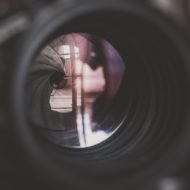Wes Andersonin uusin elokuva on nimeltään Grand Budapest Hotel ja se rantautuu teattereihin 11.4.2014. Kirjoitan kritiikin lähempänä ensi-iltaa, mutta sitä odotellessa listaan tässä joukon linkkejä, joiden lukeminen saattaa valaista elokuvaa. Osittainen spoilerivaroitus herkimmille.
American Cinematographer keskittyy kuviin:
The filmmakers also experimented with front-projecting window backgrounds for shots in the Kunstmuseum and in Madame D.’s suite at the Grand Budapest. Color-reversal slides were made from digital stills and reflected off a polarized mirror positioned 45 degrees to the camera-lens axis. Scotchlite backdrops positioned at 90 degrees to the lens axis reflected the slide image back to the camera. “There was a magical quality to the image that we all loved, but if things weren’t lined up exactly, there was a ghosting effect,” recalls Yeoman. “And the projector didn’t throw out much light, which meant we were shooting at a T2!”
Slate selittää vaihtuvien kuvasuhteiden merkityksen:
These scenes are in the 1:85:1 ratio, which became a standard format for theatrical releases starting in 1953, and so reads easily as “the present” to a moviegoer.
Creative Review’ssä vilkaistaan graafisen suunnittelun merkitystä elokuvalle:
Wes wrote all the newspaper articles himself – not just articles to accompany the main headlines, but the surrounding ones too.
The Dissolvessa tuotantosuunnittelija raottaa hieman verhoa:
In this movie, there’s a Bergman film called The Silence, with the boy wandering around the hallways, we modeled our hallways on that. If you look at the hotel doors in that film, ours are a carbon copy. There’s a sequence in a Hitchcock movie called Torn Curtain where he comes out of his hotel and he gets on the bus and he goes to the museum; we have a bit of an homage to that sequence when Deputy Kovacs goes from his office to the art museum and he’s being chased by Willem Dafoe’s character.
Elokuvan lehdistökirjasessa horistaan niitä näitä (pdf):
Ralph Fiennes: Speed of delivery is something he really values because this kind of material needs that kind of liveliness.
Telegraphissa kerrotaan elokuvan kirjallisesta inspiraatiosta:
There were so many descriptions of parts of life, which — as much as we may have read or seen something of them in movies — we didn’t really know about from his time, before reading Zweig’s memoir. In particular I don’t think I ever thought about the moment when it became necessary to have a passport, which is hugely meaningful when you see it through his eyes. You suddenly see this control that comes in.
Elvis Mitchellin haastattelussa Wes Anderson puhuu… noh, kaikesta, mutta myös elokuvasta.
